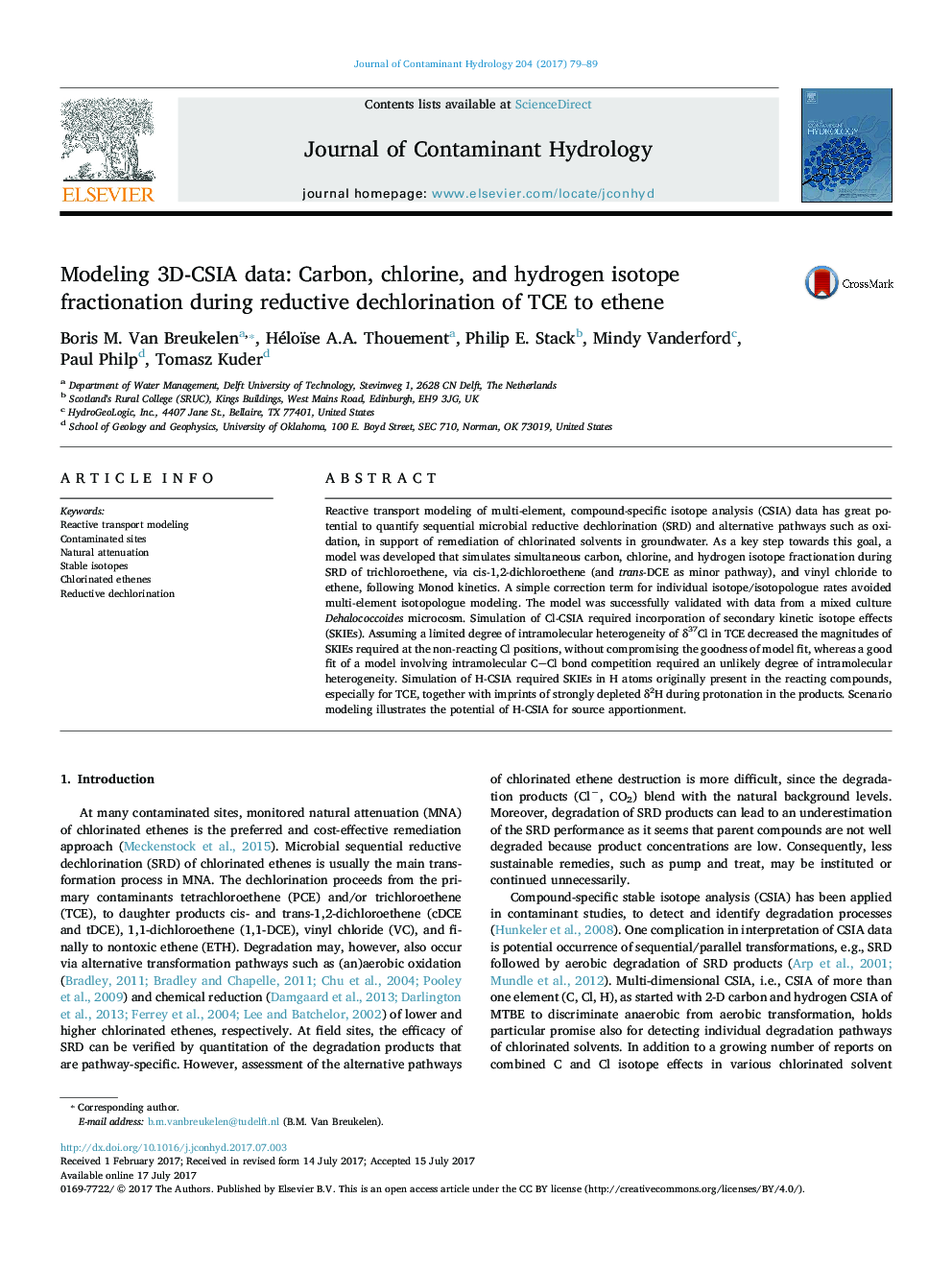| کد مقاله | کد نشریه | سال انتشار | مقاله انگلیسی | نسخه تمام متن |
|---|---|---|---|---|
| 5765928 | 1627007 | 2017 | 11 صفحه PDF | دانلود رایگان |

- A model simulating C/Cl/H-CSIA data of chlorinated ethenes is presented.
- Model validation on reductive dechlorination of TCE to ethene in microcosm experiment.
- Relevance of secondary KIEs and intramolecular heterogeneity for Cl-CSIA is shown.
- First model and simulation of H-CSIA data in sequential reductive dechlorination
- The model also runs as macro-enabled spreadsheet and is freely distributed.
Reactive transport modeling of multi-element, compound-specific isotope analysis (CSIA) data has great potential to quantify sequential microbial reductive dechlorination (SRD) and alternative pathways such as oxidation, in support of remediation of chlorinated solvents in groundwater. As a key step towards this goal, a model was developed that simulates simultaneous carbon, chlorine, and hydrogen isotope fractionation during SRD of trichloroethene, via cis-1,2-dichloroethene (and trans-DCE as minor pathway), and vinyl chloride to ethene, following Monod kinetics. A simple correction term for individual isotope/isotopologue rates avoided multi-element isotopologue modeling. The model was successfully validated with data from a mixed culture Dehalococcoides microcosm. Simulation of Cl-CSIA required incorporation of secondary kinetic isotope effects (SKIEs). Assuming a limited degree of intramolecular heterogeneity of δ37Cl in TCE decreased the magnitudes of SKIEs required at the non-reacting Cl positions, without compromising the goodness of model fit, whereas a good fit of a model involving intramolecular CCl bond competition required an unlikely degree of intramolecular heterogeneity. Simulation of H-CSIA required SKIEs in H atoms originally present in the reacting compounds, especially for TCE, together with imprints of strongly depleted δ2H during protonation in the products. Scenario modeling illustrates the potential of H-CSIA for source apportionment.
142
Journal: Journal of Contaminant Hydrology - Volume 204, September 2017, Pages 79-89